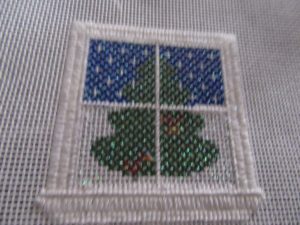
Updated February 12, 2023.
Perhaps instead of stitching the exteriors of colonial homes, you are more interested in stitching interiors. One characteristic of Georgian (English) and Colonial (American) homes is their extensive use of wooden mouldings on walls.
Mouldings (yes, this is the proper spelling) are carved pieces of wood placed on the walls to add detail. They can be as simple as a chair rail, used to keep chair backs from scraping the paint, to a complex wooden wainscot, the bottom portion of the wall).
Other types of molding include baseboards, wooden moulding at the bottom of walls, crown moulding, at the top of walls, and picture rails, about a foot down from the ceiling. Mouldings can include applied decorations and rails on fireplaces, decorations in the corners of stair walls, and frames around windows and doors.
While most modern houses don’t have much in the way of mouldings, there are plenty of places where you can buy them ad add them to your home.
You may be asking what this has to do with needlepoint. Anne Stradal is doing a new series of needlepoint, this time of clocks. Her first entry is a fine case clock, what we’d think of as a Grandfather clock. Behind it, she has a lovely wall and has written a great blog post about stitching mouldings. It’s a great place to start a stitchy exploration of them.
About Janet M Perry
Janet Perry is the Internet's leading authority on needlepoint. She designs, teaches and writes, getting raves from her fans for her innovative techniques, extensive knowledge and generous teaching style. A leading writer of stitch guides, she blogs here and lives on an island in the northeast corner of the SF Bay with her family

Leave a Reply